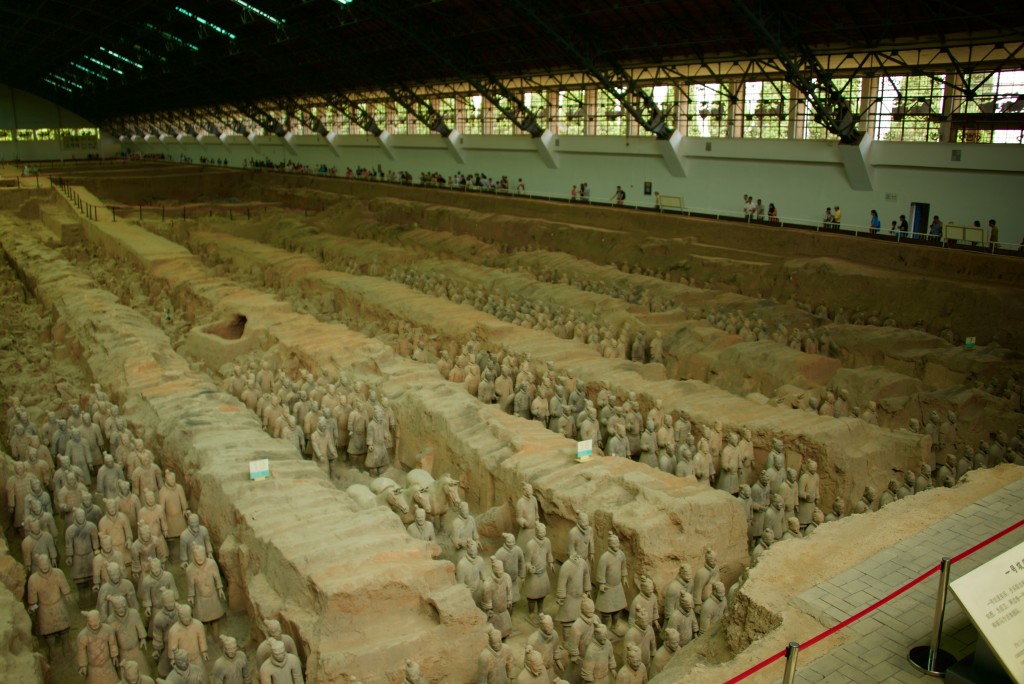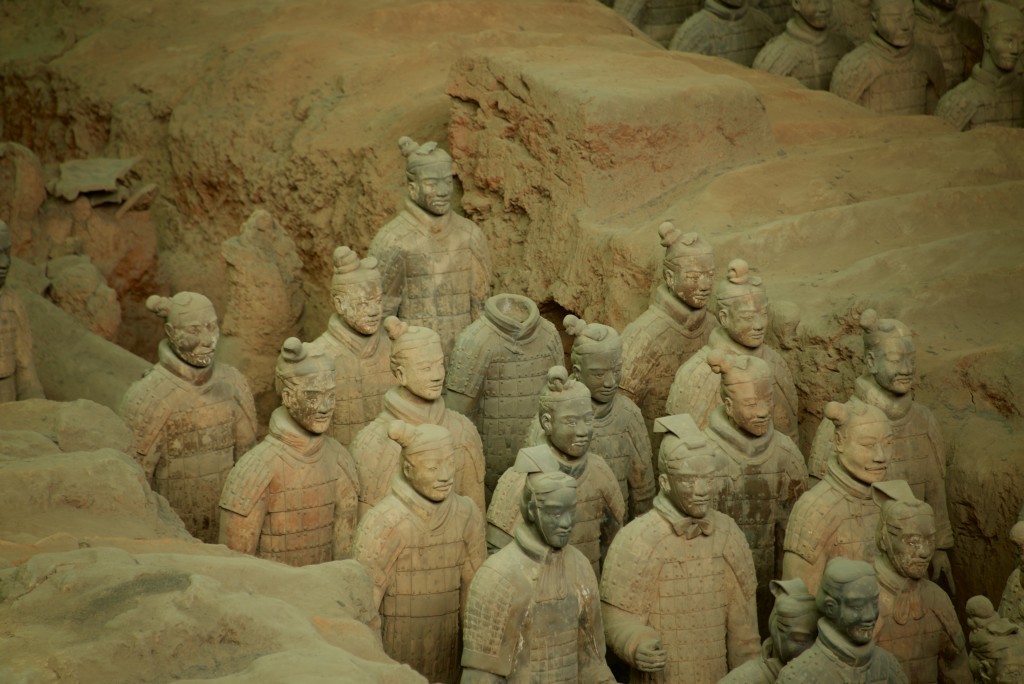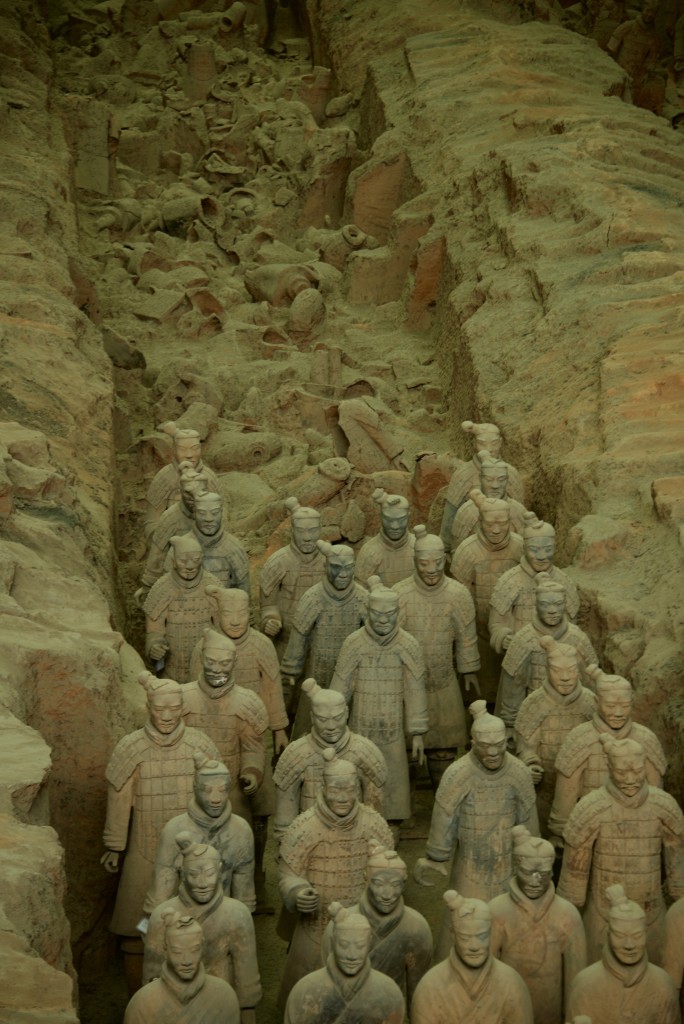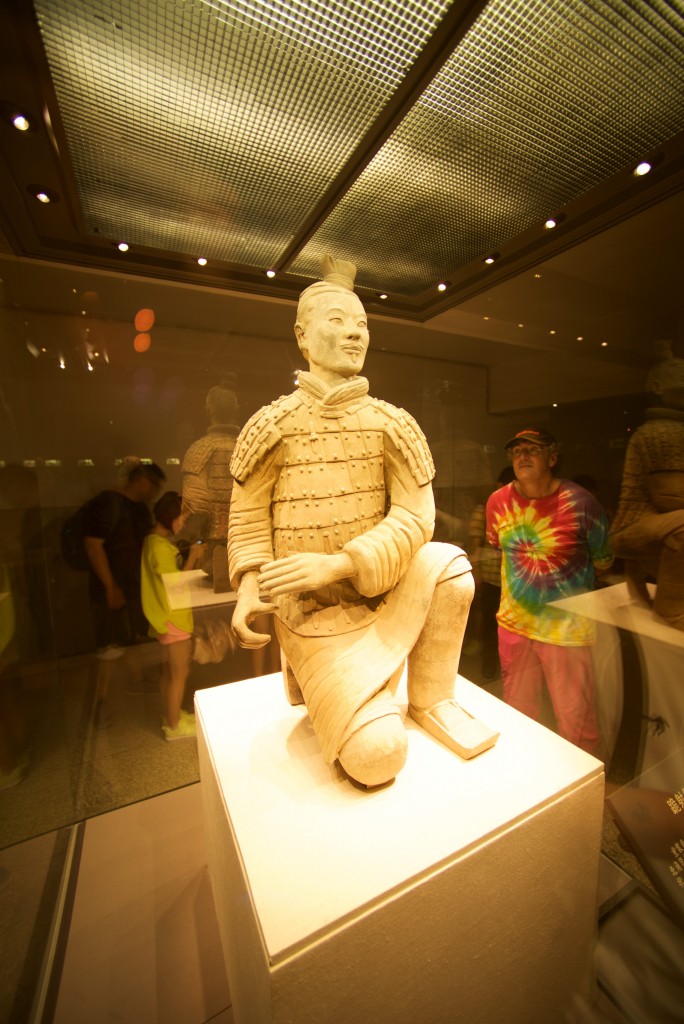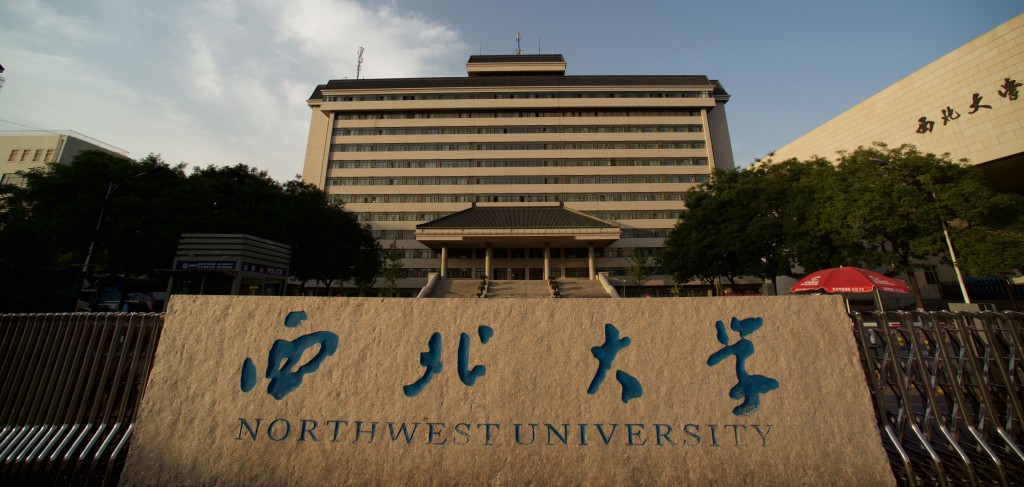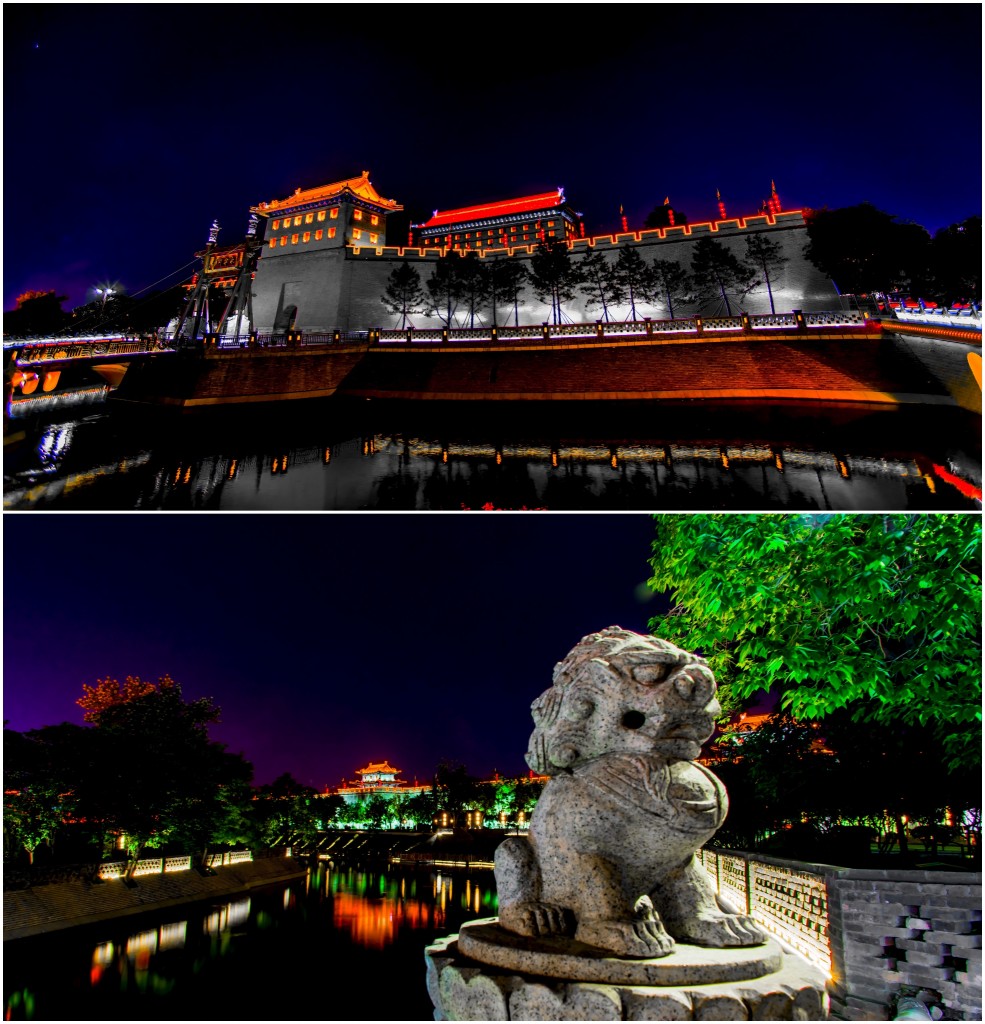Chris is a regular contributor for the TravelingGeologist and you can see his other posts here.
Of all the things quintessentially China, the terra cotta warriors and horses of Qin Shi Huang are definitely at the near the top of the list. The first broken fragments of the sculptures were discovered in 1974 by a farmer in the Shaanxi province near Xi’an. I was surprised to learn that all of the sculptures were found in pieces. The weight of the infill crushed the terra cotta (except for one solider), leaving everything in thousands and thousands of pieces. The excavation and restoration required the painstaking reassembly of each of the 6000+ figures.
This necropolis was built to honor Emperor Qin (the first emperor of China). Construction began when he was only 13 years old and the site near Xi’an was chosen presumably because there was “more gold than shadows, more jade than sun.” And thus for the emperor’s greedy reputation, here was where he was also buried.
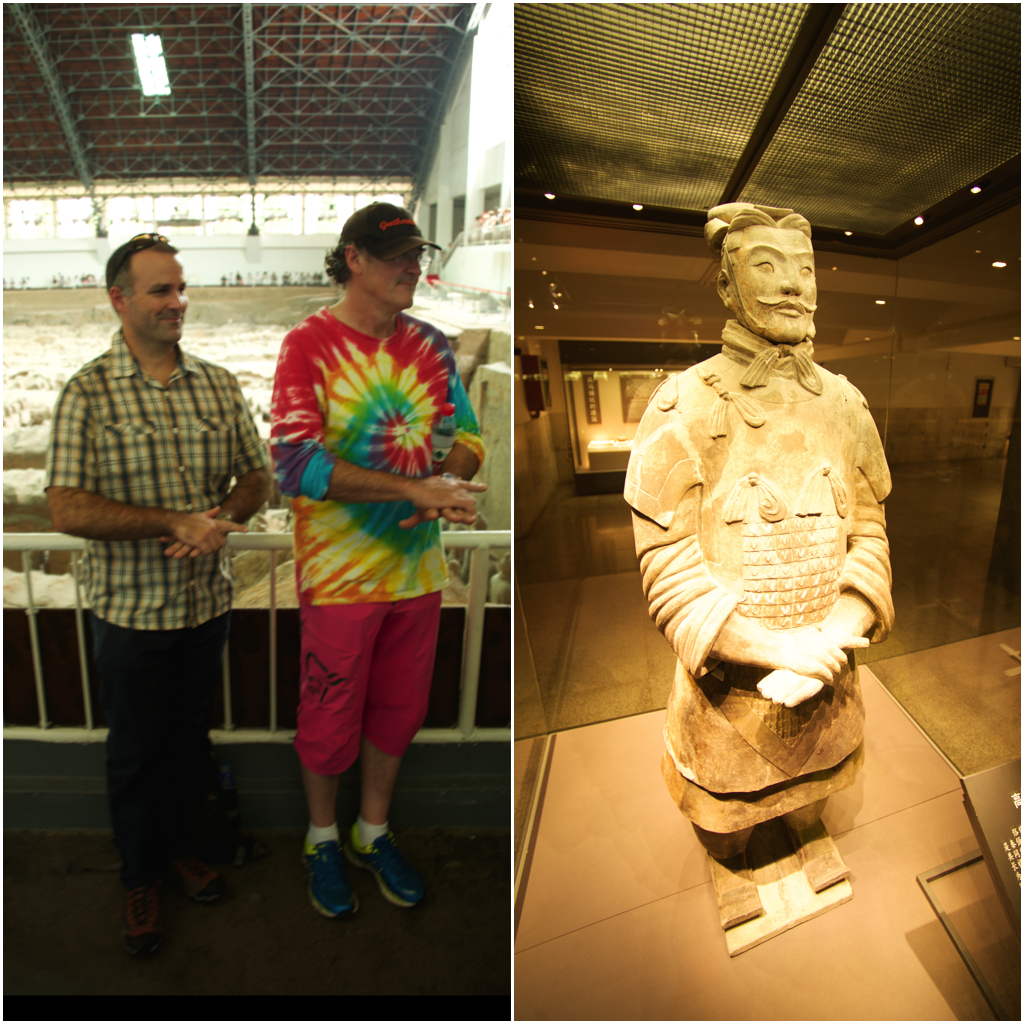
Profs Alan Collins and Martin Hand posing like the Emperor’s generals and one of the reconstructed terra cotta generals.
The age of the terra cotta army was determined using thermoluminescence dating. This type of geochronology relies on imperfections in the lattice of some material (in this case terra cotta) that can act as an electron trap. Cosmic radiation excites electron in the terra cotta causing some other them to get trapped. After burial, these electrons can remain trapped for thousands of years awaiting a thermochronologist to measure them. After collection, samples are irradiated with a 90Sr and heated to 500 ºC. This causes the trapped electrons to luminesce in a controlled fashion allowing for the age to be determined. Using thermoluminescence dating, Yanchou et al. (1988) found that the terra cotta necropolis was made ~2,200 years ago and buried shortly after. Carbon dating of charcoal has also confirmed these data.
The kneeling archer holds particular significance in modern Chinese culture for it remains the only terra cotta sculpture that was not broken by the weight of the infill. For this reason the kneeling archer has come to symbolise good luck.
Several months ago I was invited to visit Northwest University in Xi’an. I thoroughly enjoyed my visit to Xi’an and was found in awe from the spectacle of the terracotta army of Emeror Qin. My visit to Xi’an also included a field trip to the Qingling mountains. Watch this space for more about the Triassic orogenic episodes seen in the Qingling mountains.
Xi’an is a lovely city. Large and bustling, but in no way on the same scale as the other Chinese megacities. As it is also off the beaten path, there are not nearly as many tourists (at least non-Asian tourists).
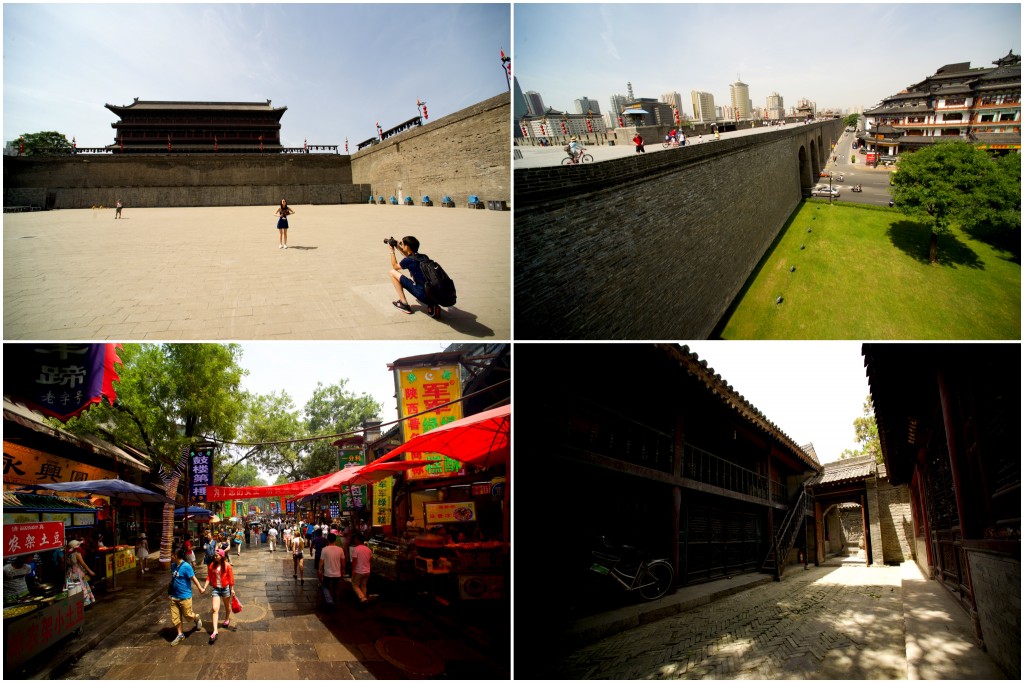
top left: classic tourist photo within one of the ancient courtyards; top right: looking across the 12 metre wide 16th century fortifications; bottom left: the lively Islam quarter; bottom right: one of many quiet corners.
![]() This work is licensed under a Creative Commons Attribution-NonCommercial-ShareAlike 4.0 International License.
This work is licensed under a Creative Commons Attribution-NonCommercial-ShareAlike 4.0 International License.

